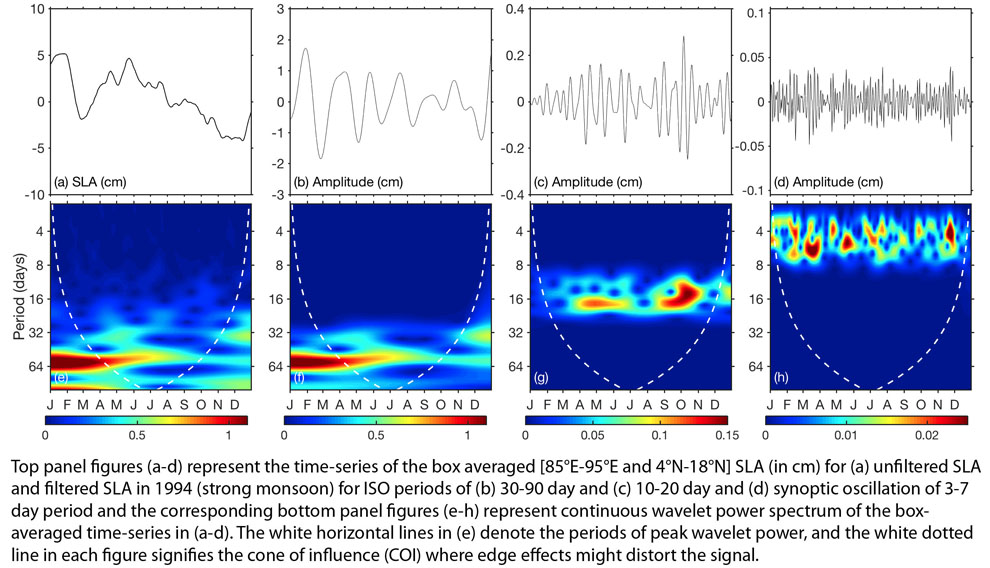Abstract's details
Utilization of Satellite Altimetry Data in Monitoring Intraseasonal Oscillations in the Indian Ocean
Event: 2019 Ocean Surface Topography Science Team Meeting
Session: Application development for Operations
Presentation type: Oral
The Indian Ocean experiences ISOs on a variety of time scales, including the 30-90 days Madden-Julian Oscillation (MJO) events, the quasi-biweekly 10-20 day signal, and the 3-7 day signal representative of weather/synoptic-scale events as a response to oscillations of the monsoon trough. These ISOs are responsible for variation from mean conditions of monsoonal rainfall and are central in modulating active (wet) and break (dry) monsoon conditions. The MJO is an atmosphere-ocean coupled event that regulates wet and dry conditions in the tropical Indian and Pacific Oceans. MJO-related ISO events drive a unique ocean-atmosphere feedback loop of alternating upwelling and downwelling Rossby waves that drive concurrent outgoing longwave radiation (OLR) anomalies and fluctuations in mixed layer depth. The synoptic structure and atmospheric dynamics of the quasi-biweekly mode have been well investigated and are related to westward-propagating surface pressure cells, but the oceanic response is not as well understood. The 3-7 day synoptic/weather signal is closely related to the active and break phases of oscillations of the monsoon trough. There is still insufficient quantification of the relationship between these ISOs and how surface waters in the Indian Ocean react with respect to sea level anomalies (SLA). Altimetric derived SLAs, unlike sea surface temperature (SST) and salinity, do not experience precipitative contamination due to propagation of convective monsoon conditions or riverine input, but instead represent the dynamic response of the ocean to ISOs well. Through the analysis of ISOs and SLA, one can develop a clear spatial and temporal understanding of how oceanic conditions respond to atmospheric events. In this work, we focus on local and basin-wide signals, zonal and meridional propagation, and variability of ISOs with respect to the strength of the summer monsoon season over a 25 years period (1993-2018). This study examines the relationship between larger- and shorter-period ISOs in SLA and shows the usefulness of altimetry data in Indian monsoon studies.


Contribution: APOP_03_Bulusu-OSTST-23Oct2019.pdf (pdf, 9306 ko)
Back to the list of abstract